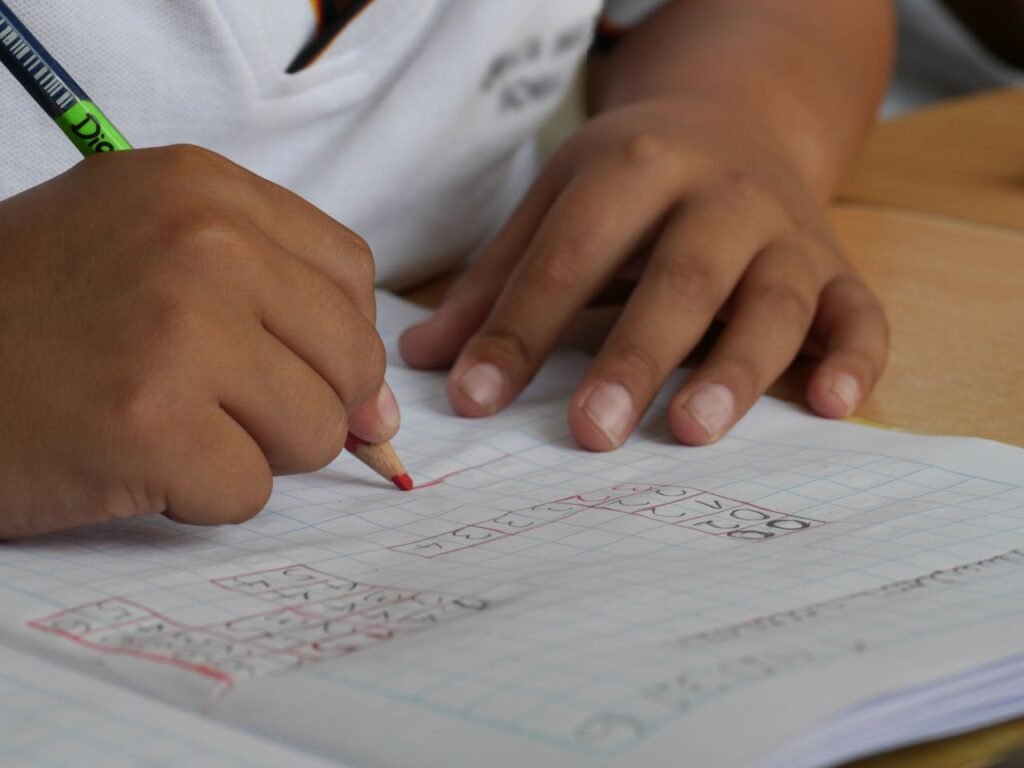If you drop an apple, it always falls down — never sideways, never up. If you look at the Moon, it never crashes into Earth and never drifts away. Why? What invisible hand is guiding both the apple and the Moon?
That invisible hand is gravity.
Gravity is one of the most powerful forces in the universe, yet you can’t see it. You can only feel what it does. It’s the reason you stay on the ground, why oceans rise and fall with the tides, and why planets circle the Sun instead of flying away into space.
In this journey, we’re going to explore gravity in the simplest way possible. You’ll see how it works, how it shapes our everyday lives, and how it keeps the entire solar system — and even the stars — in place. No big words. No confusing formulas. Just clear ideas, real-life examples, and simple activities you can try yourself.
By the time we’re done, you won’t just “know” what gravity is — you’ll be able to spot it, explain it, and even predict what it will do.
What Gravity Really Is
Gravity is a pull. That’s it. It’s not a push, it’s not magic, it’s simply a pull that happens between any two objects that have mass — mass just means they have “stuff” in them, like you, me, the Earth, the Sun, a rock, or even a tiny grain of sand.
The bigger and heavier an object is, the stronger its pull. That’s why you don’t feel pulled toward your chair, but you do feel pulled toward the Earth — the Earth is huge, so its pull is much stronger.
Gravity in Everyday Life

You actually use or notice gravity all the time, even if you don’t stop to think about it:
- When you jump into the air, gravity is the reason you come back down.
- When you drop your pencil, gravity pulls it to the ground.
- When you pour water into a cup, gravity makes the water flow downward.
Without gravity, the world would be a very strange place. Things would float around like in space. You wouldn’t stay on the ground, and even the air you breathe would drift away into nothing.
The Apple Story
You might have heard the famous story about Isaac Newton and the falling apple. The story says Newton was sitting under an apple tree when an apple fell and hit him on the head (though most historians think it didn’t actually hit him).
He wondered: “Why did the apple fall straight down instead of floating or going sideways?” This question led him to study gravity and explain how it works. Newton discovered that gravity isn’t just something that happens on Earth — it works everywhere in the universe.
Gravity Is Everywhere
One of the coolest things about gravity is that it works over huge distances. The Earth’s gravity pulls the Moon. The Sun’s gravity pulls the Earth. Even faraway stars have their own gravity pulling on planets and other stars.
And it doesn’t turn off. It’s always there, always pulling, no matter where you go. Even astronauts in space feel gravity — they just don’t feel it the same way we do on Earth because they are moving in orbit (we’ll get to that later).
A Simple Activity to “See” Gravity
You can try this at home:
- Take two objects of very different weights — like a heavy book and a crumpled piece of paper.
- Drop them at the same time from the same height.
If you drop the paper without crumpling it, it will fall slower because air resistance slows it down. But if you crumple it into a ball, you’ll see both objects hit the ground at almost the same time. That’s because gravity pulls everything down at the same speed — air just sometimes gets in the way.
Gravity on the Ground vs. Gravity in Space
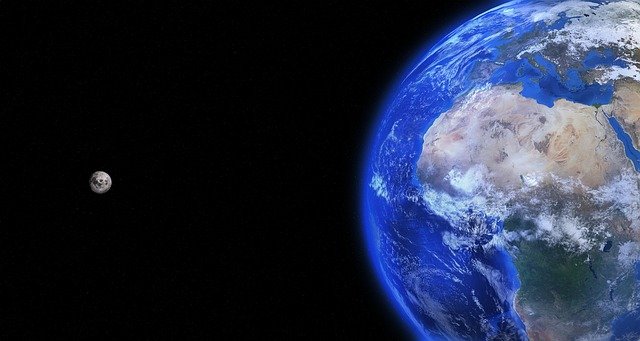
Here on Earth, gravity feels strong. It’s the reason you can’t float away when you jump. But in space, astronauts seem to drift around as if there’s no gravity at all. So what’s going on
Why You Stay on the Ground
The Earth is massive. Its size gives it a very strong gravitational pull. Wherever you are — on a mountain, at the beach, or even in an airplane — Earth’s gravity is always pulling you toward its center. That’s why “down” is always toward the ground beneath your feet.
You don’t notice the pull directly because you’re used to it, but you do feel its effects every second. Without gravity, you wouldn’t just lose your balance — you’d lose the ground itself as everything, including you, floated away.
Why the Moon Doesn’t Crash into the Earth
If gravity is always pulling, then why doesn’t the Moon just fall straight into Earth?
The answer is: it’s falling — but it’s also moving sideways at just the right speed.
Think of swinging a ball on a string around your head. The string pulls the ball inward, but the ball’s movement keeps it circling instead of flying into your hand. That’s what Earth’s gravity does to the Moon.
The Moon is moving sideways around Earth. Gravity pulls it inward, but its speed keeps it in a curved path — that curved path is what we call orbit.
Why Planets Don’t Crash into the Sun
The same thing happens with planets and the Sun. The Sun’s gravity is incredibly strong, but planets are moving sideways so quickly that they keep circling instead of falling in.
If the planets suddenly stopped moving, they would fall straight into the Sun. If they moved too fast, they would escape the Sun’s pull and fly off into space. Gravity and speed need to be perfectly balanced for orbits to work.
A Simple “Orbit” Activity
You can try a mini-orbit experiment at home:
- Tie a small ball or weight to the end of a piece of string.
- Hold the other end of the string and swing the ball in a circle around you.
- The string is like gravity, pulling the ball inward. The ball’s motion keeps it going around instead of falling into your hand.
If you let go of the string, the ball will fly off in a straight line — that’s what would happen to the Moon if Earth’s gravity disappeared.
Gravity Is Not the Same Everywhere
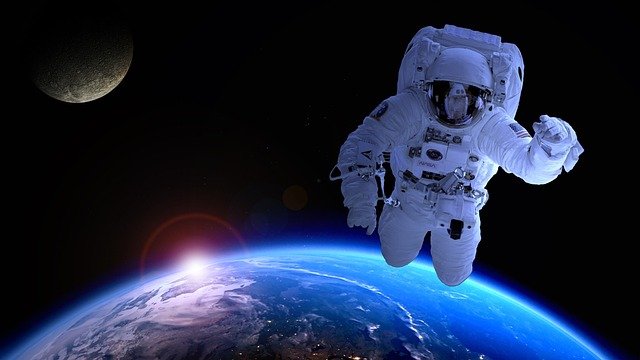
We often think of gravity as one fixed, unchanging thing — but it actually changes depending on the size of the object you’re on, and how far you are from its center.
Gravity on Earth
On Earth, gravity feels strong because the planet is big and has a lot of mass. Whether you’re at the beach or in the middle of a city, the pull is almost the same.
But here’s a surprising fact — if you go to the top of a very high mountain, gravity becomes slightly weaker. That’s because you’re farther from Earth’s center. You wouldn’t feel the difference in your day-to-day life, but sensitive measuring tools can detect it.
Gravity on the Moon
The Moon is much smaller than Earth, so its gravity is weaker — about one-sixth as strong. That’s why astronauts could jump higher and carry heavy equipment more easily during the Apollo missions. A 60-kilogram person on Earth would “weigh” only about 10 kilograms on the Moon.
Even though the Moon’s gravity is weaker, it’s still strong enough to keep the Moon’s rocks, dust, and even its tiny bit of atmosphere from drifting away into space.
Gravity on Other Planets
Gravity changes even more when you look at other planets:
- Jupiter has the strongest gravity of all planets in our solar system because it’s huge. If you stood on Jupiter (which you couldn’t really, because it’s mostly gas), you’d feel more than twice as heavy as you do on Earth.
- Mars has weaker gravity — about one-third of Earth’s — which is why scientists think astronauts there would be able to jump higher and carry heavy things more easily.
Zero Gravity — Is It Real?
You’ve probably heard people talk about “zero gravity” in space. But here’s the truth: there’s no such thing as true zero gravity unless you are infinitely far from everything else in the universe. Even in space, gravity is always there, just much weaker.
Astronauts in the International Space Station appear weightless because they’re in free fall. The station is falling toward Earth — but it’s also moving sideways fast enough to keep missing Earth. That’s why they float.
A Home Gravity Experiment
Here’s something simple you can do to imagine different gravities:
- Put a backpack on and try jumping — notice how the extra weight makes it harder.
- Take the backpack off — you’ll jump higher and move more easily.
That’s what it’s like to go from a high-gravity place (like Jupiter) to a low-gravity place (like the Moon).
Gravity Shapes Our World in More Ways Than You Think
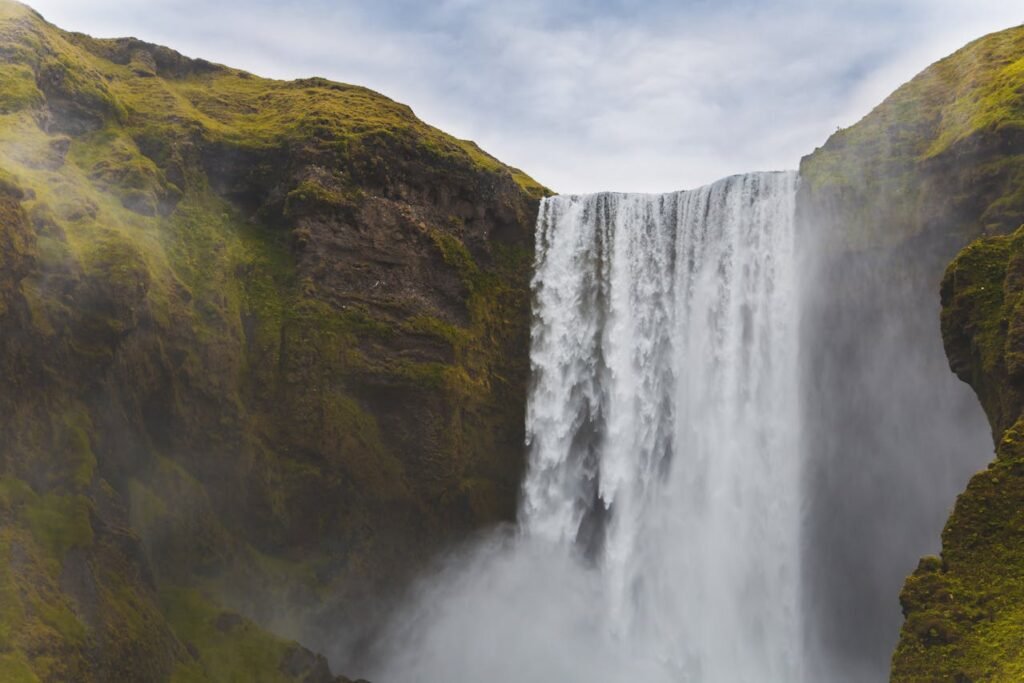
Gravity doesn’t just keep our feet on the ground. It controls our oceans, influences the weather, and even affects how our bodies work.
Gravity and the Oceans
If you’ve ever been to the beach, you’ve seen tides — the regular rising and falling of the ocean water. This happens because of the Moon’s gravity.
The Moon’s pull is strong enough to move huge amounts of water on Earth. When the Moon is directly above a certain part of the ocean, it pulls the water upward slightly, creating a high tide there. On the opposite side of the Earth, another high tide happens because of the way water shifts around the planet.
The Sun’s gravity also plays a role, making tides higher or lower depending on where the Sun and Moon line up. Without gravity from these two giant objects, tides wouldn’t exist — and that would change ocean life completely.
Gravity and Weather
Gravity even helps create our weather. It keeps our atmosphere — the blanket of air around Earth — from floating away into space.
This means clouds, wind, and rain are all possible because of gravity. Without it, air molecules would scatter into space, and we wouldn’t be able to breathe or have any kind of climate.
Gravity also pulls cold air down and lets warm air rise, which creates wind patterns. These patterns move storms, bring rain, and help plants grow.
Gravity and Your Body
Your body has adapted perfectly to Earth’s gravity. Your muscles and bones, and heart all work with this constant pull.
When astronauts spend a long time in space, where gravity is weaker, their muscles shrink and bones lose strength because they aren’t working as hard to support their bodies. That’s why astronauts must exercise every day in space to stay healthy.
Even your blood flow depends on gravity. When you stand up, gravity helps pull blood toward your feet. Your body has special systems to pump it back up to your brain — without that, you’d faint every time you stood up.
A Simple Tides Demonstration
You can mimic tides at home using a bowl of water and a small ball.
- Fill a shallow bowl with water (this is Earth’s ocean).
- Place a small ball (this is the Moon) close to one side of the bowl.
- Gently tilt the bowl toward the ball and watch the water move higher on one side.
That higher side is like high tide. Move the ball around the bowl and see how the “tide” changes.
How We Measure Gravity
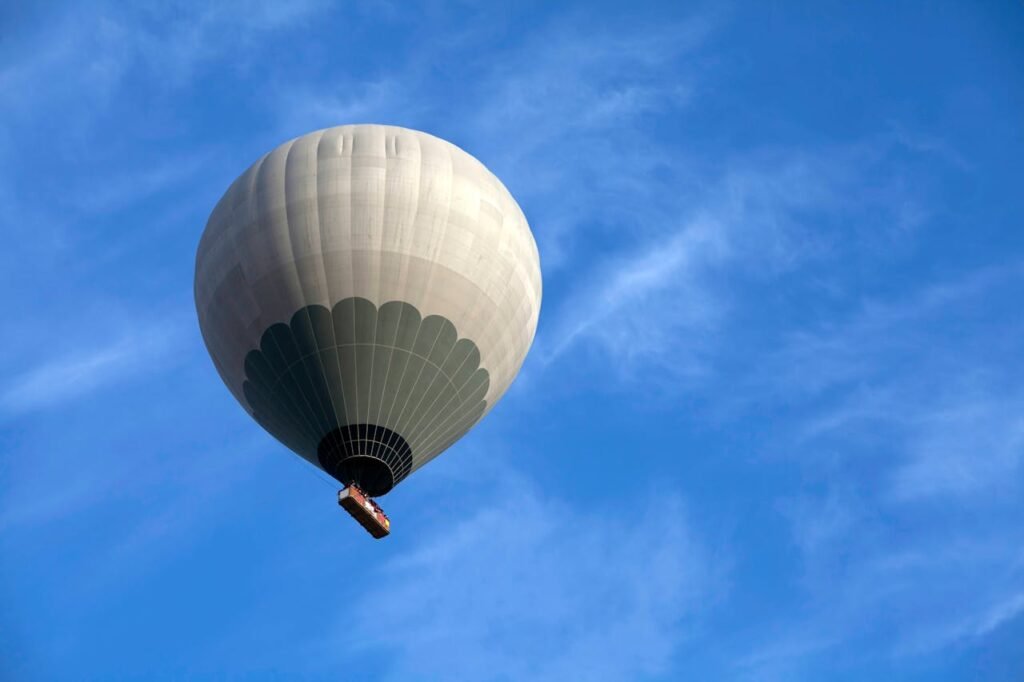
Gravity is invisible, but it leaves clues everywhere. Scientists measure it using very sensitive tools called gravimeters. These can detect tiny changes in gravity’s strength from place to place.
Why would gravity change? Because the Earth is not perfectly smooth inside. Some areas have more dense rock or more mass under the surface, which makes gravity slightly stronger there. Other areas have less mass, making gravity a little weaker.
Even small differences matter. For example, mapping tiny changes in gravity helps scientists find underground water, oil, and even hidden lava chambers in volcanoes.
The Standard Value
On Earth’s surface, gravity pulls with a force of about 9.8 meters per second squared. This means that every second something falls, it gets 9.8 meters per second faster (until air resistance slows it down).
We don’t usually feel that number — we just feel “weight.” But knowing it helps scientists plan rockets, design bridges, and even make sports equipment that behaves exactly as expected.
Using Gravity in Technology
We use gravity in ways you might not even notice:
- Clocks – Some old clocks use a swinging pendulum, which swings at a steady rate thanks to gravity’s pull.
- Water systems – Many water tanks are placed high up so gravity can pull the water down into pipes without pumps.
- Theme park rides – Roller coasters use gravity after the first big climb to carry you through loops and turns.
Gravity in Space Travel
Rockets use gravity in two ways — first they have to fight against Earth’s gravity to reach space. This is why rockets need so much fuel — escaping Earth’s pull takes a huge amount of energy.
But once in space, gravity becomes a helper. Space agencies use something called a gravity assist to save fuel. This means sending a spacecraft close to a planet so the planet’s gravity “slingshots” it faster toward its destination.
This trick has been used to send spacecraft to explore Jupiter, Saturn, and even beyond the edge of our solar system.
Home Experiment: Gravity-Powered Motion
Try this:
- Place a toy car at the top of a ramp.
- Let it roll down without pushing it.
You’re seeing gravity convert stored height energy into motion energy. This same principle is used in roller coasters, ski slopes, and even certain power plants.
Why Gravity Is Essential for Life
If gravity suddenly disappeared, Earth would lose everything that makes it livable. Our air would drift into space. Oceans would rise up and scatter. You and everything else would float away. Plants couldn’t grow because water wouldn’t stay in the soil. Even the Moon would leave, taking our tides with it.
Gravity is what keeps Earth’s atmosphere wrapped around us, holding in the oxygen we breathe and the warmth we need. Without it, life as we know it would end in seconds.
Gravity Shapes the Universe
Gravity doesn’t just hold things down — it builds the biggest structures in the universe. It pulls gas and dust together to form stars. It gathers billions of stars into galaxies. It shapes the paths of comets and asteroids, and even bends light from distant stars (a phenomenon called gravitational lensing).
Black holes, the most mysterious objects in space, are places where gravity is so strong that nothing — not even light — can escape.
Gravity and the Expansion of the Universe
Even though gravity pulls things together, the universe as a whole is expanding. Scientists think something called “dark energy” is pushing galaxies apart faster and faster, fighting against gravity. We don’t fully understand how the two forces interact — and that’s one of the biggest mysteries in science today.
How Gravity Connects to You
Every time you play on a swing, pour juice into a glass, drop a ball, or watch the Moon rise, you’re seeing gravity in action. It’s not just a science topic — it’s the quiet, invisible force that shapes every part of your day.
The amazing thing is, by understanding gravity, you can explain not just why apples fall, but why planets move, why tides rise, and even how rockets reach the stars.
How Debsie Helps Kids Master Big Ideas Like Gravity

At Debsie, we believe that every child is born curious — and science is one of the best ways to keep that curiosity alive. Big topics like gravity can feel tricky at first, but when they’re explained in a way that’s simple, playful, and connected to real life, they suddenly make perfect sense. Our mission is to take these “big ideas” and break them down into small, exciting discoveries that kids can see, touch, and explore for themselves.
Turning Big Science into Simple Stories
At Debsie, we know that children learn best when complex ideas are turned into simple, relatable stories. Instead of giving a heavy textbook definition of gravity, we explain it through everyday examples — a falling apple, a flying football, or a ride on a swing. Kids immediately connect the science to their own lives, which makes it easier to understand and remember.
Expert Teachers Who Make Learning Fun
Our partner teachers are experts in physics, astronomy, and every other school subject — but they also know how to keep things fun. They use games, drawings, and real-life demonstrations so lessons feel more like play than study. This way, learning about something as powerful as gravity becomes exciting instead of intimidating.
Hands-On Learning That Sticks
We believe kids remember best when they do the learning themselves. That’s why our classes include mini-experiments — from rolling balls down ramps to creating “mini-orbits” with string and marbles. These activities let children see and feel the science in action.
Connecting Gravity to the Bigger Picture
Gravity is just one piece of the STEM puzzle. At Debsie, we also teach maths, biology, chemistry, coding, and more. This helps kids see how gravity links to energy, space travel, weather, and even technology. The result? They don’t just learn one fact — they understand how science works as a whole.
Building Curiosity and Confidence
Our goal is not just to help kids pass tests, but to help them think like scientists and problem-solvers. By encouraging questions, exploring “what if” scenarios, and celebrating discoveries, we help children gain the confidence to explore the world with curiosity and creativity.
Final Thoughts
Gravity is the thread that ties the universe together. It’s the reason planets orbit the Sun, why the Sun burns brightly in the first place, and why we are standing here to ask these questions.
The next time you see something fall, don’t just watch — think about the journey it’s taking, the invisible pull guiding it, and the way that same pull shapes galaxies billions of light-years away.
At Debsie, we love helping curious minds explore big ideas like gravity in ways that feel simple and exciting. Our teachers turn “complicated” science into everyday discoveries kids can understand, experiment with, and enjoy.
You can start your own learning adventure with a free trial class today. Visit Debsie Courses and see how fun learning about the universe can be.
Read next:

